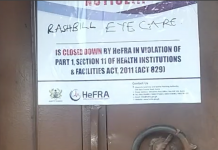Oil prices remained stable on Tuesday, trading within a narrow range ahead of what is anticipated to be a very tight U.S. presidential election.
This comes after prices increased over 2% in the previous session, supported by OPEC+’s decision to delay a production increase scheduled for December.

Brent crude futures dipped slightly by 3 cents, or 0.04%, to $75.05 a barrel at 0600 GMT, while U.S. West Texas Intermediate crude fell 4 cents, or 0.06%, to $71.43 a barrel.
“We are currently experiencing a calm before the storm,” noted IG market analyst Tony Sycamore.
The price support stemmed from OPEC and its allies’ recent announcement to postpone a planned production increase by a month, attributing the delay to weak demand and increasing supply from non-OPEC countries.
However, trading activity is cautious this week, with significant events such as the U.S. election, the Federal Reserve’s policy meeting, and China’s National People’s Congress (NPC) meeting causing traders to hold back, according to Yeap Jun Rong, a market strategist at IG.
Polls indicate that the U.S. presidential race will be highly competitive, and any delays in election results or disputes could pose risks to broader markets.
Yeap mentioned that the market is also watching the NPC meeting for potential fiscal stimulus announcements that could boost demand in China, although strong commitments are unlikely before the U.S. election results.
In October, OPEC oil production rebounded as Libya resumed output, according to a Reuters survey, though Iraq’s attempts to meet its OPEC+ cut commitments limited overall gains.
Additionally, Iran plans to increase its output by 250,000 barrels per day, as reported by the country’s oil ministry.
In the U.S., a late-season tropical storm expected to strengthen into a category 2 hurricane in the Gulf of Mexico could impact oil production, potentially reducing output by about 4 million barrels, according to researchers.
“Crude oil needs to rise above the resistance levels at $71.50/72.50 to mitigate downside risks,” Sycamore commented regarding WTI prices, suggesting that there won’t be a rush to drive prices higher in the short term.
Ahead of the release of U.S. weekly oil data on Wednesday, a preliminary Reuters poll indicated that U.S. crude stockpiles likely increased last week, while distillate and gasoline inventories are expected to have declined.























































![[FREE FREE MONEY] Predict and Win a Guaranteed GH¢200 From Us EVERY WEEK](https://wordpress.ghanatalksradio.com/wp-content/uploads/2022/02/Predict-and-Win-Final-09-03-2021-218x150.jpg)
![[Predict & Win – 8th/Oct.] WIN A Guaranteed ¢200 From Us This Week](https://wordpress.ghanatalksradio.com/wp-content/uploads/2021/10/maxresdefault-16-218x150.jpg)
![[Predict & Win – 2nd] WIN A Guaranteed ¢200 From Us This Week](https://wordpress.ghanatalksradio.com/wp-content/uploads/2021/09/maxresdefault-50-218x150.jpg)
![[Predict & Win – 25th] WIN A Guaranteed ¢200 From Us This Week](https://wordpress.ghanatalksradio.com/wp-content/uploads/2021/09/maxresdefault-36-218x150.jpg)
![[Predict & Win – 18th] WIN A Guaranteed ¢200 From Us This Week](https://wordpress.ghanatalksradio.com/wp-content/uploads/2021/09/maxresdefault-23-218x150.jpg)











![[National cathedral] See full list of churches that have contributed since 2018](https://wordpress.ghanatalksradio.com/wp-content/uploads/2020/09/Ghana-National-Cathedral-GhanaTalksRadio-100x70.jpg)



